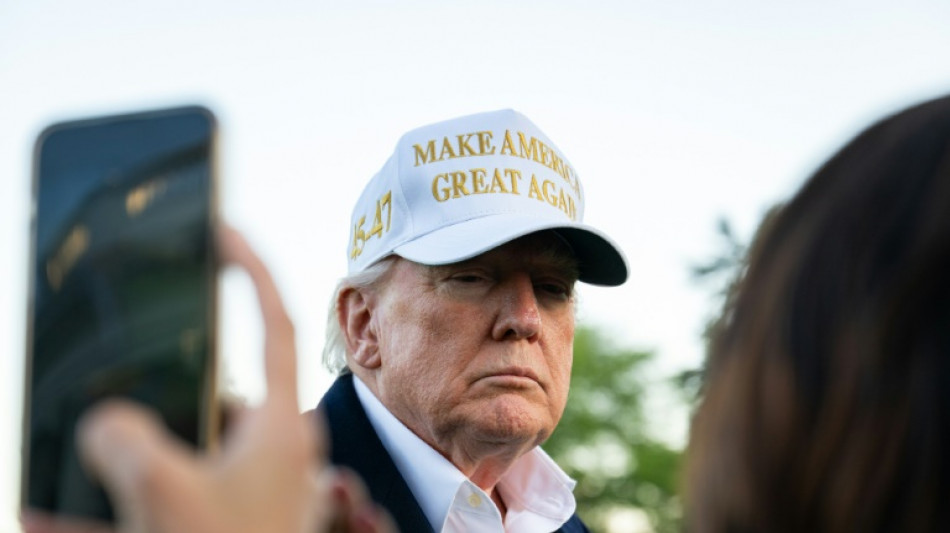Trump targets US 'sanctuary cities' in migrant crackdown / Photo: Annabelle GORDON - AFP/File
Donald Trump signed an executive order Monday to crack down on "sanctuary cities" that defy his hardline immigration policies, as the US president closes in on his first 100 days back in office.
The Republican has claimed major progress in honoring his election campaign promises to stem illegal border crossings from Mexico, which soared to all-time highs under his Democratic predecessor Joe Biden.
The order directs officials to publish within 30 days a list of states and local authorities that "obstruct the enforcement of Federal immigration laws," saying those named risk losing access to certain government funding.
Trump will this week be hailing his achievements since returning to the White House, claiming successes on the economy, foreign policy and government efficiency, as well as on migration.
But his popularity has plunged since January, with more than 40 percent of Americans saying they "disapprove strongly" of him, according to a Washington Post-ABC opinion poll.
Trump's spokeswoman Karoline Leavitt on Monday noted a 95 percent drop in encounters of undocumented migrants at the Mexico border -- from 140,000 to 7,000 -- in the 12 months from March 2024, when Biden was still in office.
"America's borders are now secure because of President Trump," she said. "He has restored the rule of law, enforced our immigration laws and defended America's sovereignty."
Trump's election campaign rhetoric about taking on the alleged hordes of rapists and murderers resonated with American voters concerned about illegal immigration.
- Butted heads -
Monday's executive order targets "sanctuary cities" that typically prohibit local officials from telling federal agents about undocumented immigrants if they are at risk of deportation.
The mayors of four such cities -- Boston, Chicago, Denver and New York -- were questioned over their immigration policies during a tense hearing at Congress in March.
Courts have upheld the legality of sanctuary laws, and a US judge ruled last week that Trump's administration cannot withhold federal funds from authorities offering limited protections to undocumented migrants.
In a sign of Trump's focus on immigration, placards lined the White House lawn Monday displaying the mugshots of immigrants.
The word "arrested" was printed in capital letters above each photo and, below, the crime of which they were accused -- from "first-degree murder" and "sexual abuse of a child" to "distribution of fentanyl."
An accompanying White House press release included a list of 100 individuals that it said were the "worst of the worst criminal illegal immigrants" arrested since Trump took office.
Meanwhile, Republicans in the House of Representatives released a bill giving Trump powers to levy a host of onerous immigration charges -- including a minimum $1,000 fee for asylum applications.
Trump has also sent troops to the Mexican border and designated Latin American gangs like Tren de Aragua and MS-13 as terrorist groups.
But he has butted heads with judges, rights groups and Democrats who say he has ignored constitutional rights in rushing to deport migrants, sometimes without the right to a hearing.
Tom Homan, Trump's point man on border security, told reporters Monday that "we have the most secure border in the history of this nation."
He was asked about deportation rates, which have lagged behind Biden's numbers, despite Trump's promised campaign of the largest mass removal campaign in US history.
The government has not been releasing comprehensive data, but the Migration Policy Institute said it appeared on track to remove half a million people this year -- fewer than the 685,000 deportations recorded in fiscal year 2024 under Biden.
Homan argued that comparisons were bogus, since Biden's deportation numbers included people removed at the border, and most of those people were now being stopped before getting in.
Z.Barbier--LCdB
